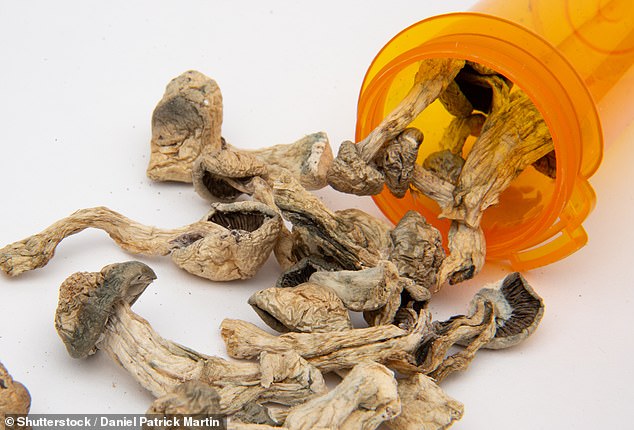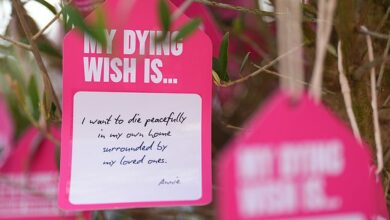Man amputates penis and keeps it in a jar after taking a ‘heroic’ dose of magic mushrooms




A man on holiday in Austria who used ‘magic mushrooms’ fell into a psychosis, forcing him to amputate his penis and store it in a snow-filled jar.
Doctors are calling this the first case of its kind and a poignant reminder of the dangers of psychedelic drugs.
The 37-year-old ate four or five mushrooms around 9pm before blacking out, taking an ax to his penis shaft and chopping it into several pieces.
When he came to, he staggered out of the house and dragged himself, bleeding profusely, through a nearby street in search of help.

Psilocybin in magic mushrooms has been linked to psychotic episodes, but especially in people with a history of depression, anxiety, or other mood or personality disorders.
A passerby picked him up at 2 a.m., took him to the nearest village and took the man to the nearest hospital.
He was immediately taken to the operating room, where doctors controlled the bleeding and disinfected the numerous pieces of the man’s penis in the snow- and soil-filled jar.
Some damaged parts had to be removed, but the head of the penis and shaft were intact.
After cleaning the wound, doctors reattached the peniseven though there was no blood flow for a total of about 9 hours (5 hours hot and 4 hours cold).
After inserting a catheter, the surgeon reconnected the tissues of the penis using dissolvable sutures. The scrotal skin was then sewn back to the cleaned skin of the amputated part.
Some of the skin on the tip of the man’s newly reconstructed penis began to die about a week later, a condition called necrosis due to a lack of oxygen-rich blood flow there, but doctors were able to treat it and reverse the damage.
Despite all this, the man still suffered from hallucinations and at one point even tried to escape from the hospital.
Doctors discovered he had smuggled mushrooms into his hospital room and found a handful of them in his bedside table in the urology department.
Because the patient did not follow medical instructions, he was transferred to the Intensive Care Unit the day after surgery
Over time, his psychotic symptoms improved as he continued the medication, allowing him to return to the urology department.
Despite the drastically reduced size of his penis (not all severed fragments could be salvaged), his erectile function returned and he was able to urinate independently.
The doctors said: ‘To our knowledge, this is the first report of psilocybin-induced penile amputation with subsequent macroscopic replantation.’
The main concern among experts when it comes to psychedelics, which are illegal for recreational use, is the risk of causing a psychotic episode.
The man had a history of depression and problematic drinking habits before eating the mushrooms, which together could weigh up to 50 mg of psilocybin, the drug that gives mushrooms their hallucinogenic effects.
About 35 mg will cause severe perceptual and cognitive distortions. A 50 mg dose, known in the psychedelic community as a “heroic” dose, separates the mind from the body, causing overwhelming and perhaps bizarre delusions and hallucinations.

The case described by doctors in Austria is the first of its kind in which psilocybin causes this type of disfigurement
Psilocybin is illegal in the US, but the FDA approved it in 2018 as a “breakthrough therapy,” reserved for treatments for serious conditions that may be more effective than existing ones.
Given that there have been so few innovations in the treatment of depression and mood disorders in recent decades, this was received with enthusiasm by doctors and patients alike.
This designation means regulators will speed up clinical review and the FDA will prioritize research into its benefits and harms.
But several case studies have emerged of people experiencing psychosis linked to a psychedelic.
A healthy 32-year-old woman with a good job and a fulfilling social life. She had a history of anxiety and depression, which she controlled with medication.
Friends urged her to take psilocybin, and she had a positive experience. The next day she took magic mushrooms again, which led to prolonged mania, paranoia and insomnia for three months.
Once her manic and psychotic symptoms resolved, she entered a severe depressive phase, characterized by total emotional numbness, inability to connect with her dog, and loss of interest in daily activities.
Despite extensive medical tests and various treatments – including medications, therapy using magnetism on her brain and holistic therapies – none worked.
She started taking a drug that mimics the action of dopamine in the brain and regulates mood and emotions. As she gradually increased her dose, her psychosis disappeared and she was able to regain her life.

From 2018 to 2021, use of psychedelic drugs, excluding LSD, almost doubled, with rates increasing from 3.4 percent to 6.6 percent
The movement to get psychedelics into the hands of people dealing with persistent depression and PTSD suffered a major blow this summer when the FDA rejected an attempt by controversial pharmaceutical company Lykos Therapeutics to use a form of MDMA (also known as ecstasy). to approve PTSD.
The methodologies of the studies were deeply flawed. It was impossible to keep it blind, because everyone who received the drug knew this was the case based on the effects they experienced, and those who received a placebo knew with certainty that they had not received the drug.
And the company overlooked problems, including reports from some patients that their symptoms even worsened, making the study results unreliable.
Research has shown that the use of psychedelics is increasing, especially among young people.
Researchers from the University of Michigan found that 6.6 percent of individuals between the ages of 19 and 30 reported using a hallucinogenic drug other than LSD in the past year, as of 2021.
In contrast, only 3.4 percent had reported such use less than five years earlier, in 2018. Researchers noted that this significant increase is concerning, especially given recent studies suggesting that psychedelics such as magic mushrooms may help treat depression and other mental health conditions.




